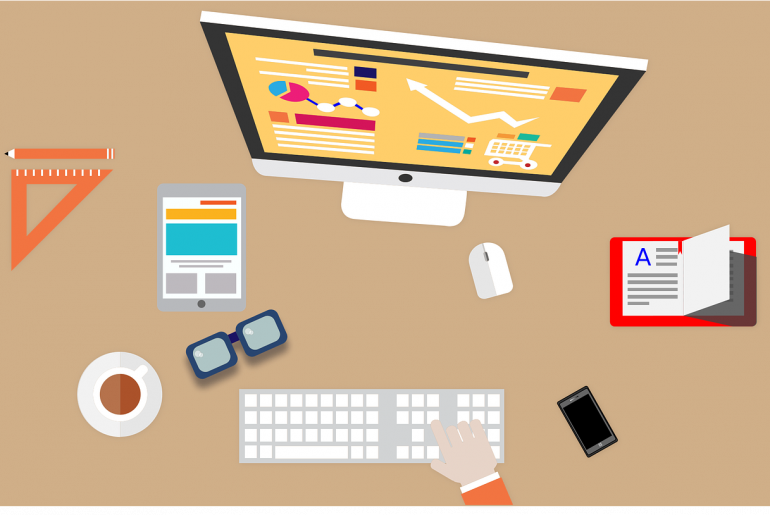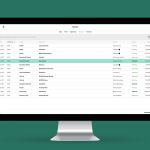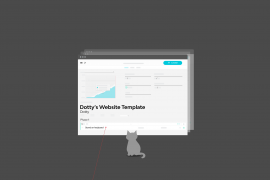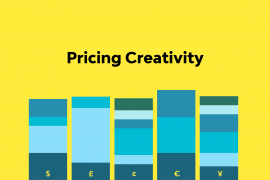Our lives are busier than ever before. We use a ton of apps to communicate with each other and are (almost) always on, especially if we work with people across different timezones. It’s hard to keep track, and it’s hard to stay sane.
Everyone’s work process is different, however. We wanted to know how leading designers and project managers approach time management and productivity, so for this article, a follow-up to 10 expert tips to get the most out of time-tracking, we interviewed 15 experts to find out what they do to make the most of their time.
Here’s what they recommend:
1. Don’t neglect self-care
A lot of the experts we talked to mentioned how crucial self-care is to productivity.
“I can’t emphasise self-care enough,” explains Greyson MacAlpine, a product designer at full-service digital agency Ueno. “Know what your body needs to function at top performance. Know when you’re pushing too hard and need to emotionally and mentally reset, so that you can work smarter, not just harder. Dig deep to understand and resolve any causes of underlying stress that are sabotaging your ability to stay focused, perform at your best, and deliver. Stress is toxic.”
Meg Lewis, a designer and founder of collaborative creative studio Ghostly Ferns, agrees: “As a freelancer my schedule can get packed quickly while I’m juggling 10+ projects at a time,” she explains. “If my workload looks intense, I make sure to allocate a specific amount of hours for myself to recharge. I’ll track time for self-care and make sure I get x amount of hours in per week for myself to do whatever I need to keep myself feeling energised and happy.”
Self-care also means losing the perfectionism, which can cause a lot of stress and slow you down, argues Michael Wong, founder and freelance UX designer.
“As a designer I’m always challenging myself to be better,” he says. “Reality is, nothing will ever be perfect, so you have to learn to manage your priorities and know when to draw the line.”
2. Take frequent breaks
One of the most straight-forward ways to look after yourself and boost your productivity is to take frequent, guilt-free breaks and maybe just walk around the block.
“It seems counterintuitive to us overachievers who want to always be on the move,” argues MacAlpine, “but I’ve discovered the hard way (it’s called burnout) that stepping away for a few minutes (maybe even a day) helps me reset and improves my output.”
Frequent breaks can also give you physical relief, which is important if you spend the majority of your time in front of a computer using a mouse.
“When it comes to my productivity, there are two factors that tend to get in the way: distractions and my RSI (repetitive strain injury),” explains Inayaili de León Persson, lead web designer at Canonical, the company that delivers open-source software platform Ubuntu. “I’ve found that the best way to avoid both is to take frequent breaks. I use an app called Time Out that reminds me to stop working every 5 minutes for 15 seconds, so I can look away from the screen and do a quick mini-stretch, and every 25 minutes for 5 minutes, so I can get up and move. It sounds like a lot, but it’s incredibly important to look after yourself—if I can’t move my arm, I can’t work. If I know I will have a break soon, it’s easier to focus on being productive.”
3. Monitor your Slack and social media usage
As de León Persson notes, you should also minimise distractions, and that means all the apps you have running and constantly engage with.
“Slack can be a productivity killer,” sighs digital project management consultant Brett Harned. “So set yourself away and close it down when you need time to work. A simple message that says ‘I’m going to turn notifications off for a bit’ in the appropriate channel will let people know that you don’t want to be bothered.”
The same applies to Twitter, Facebook, or whatever other apps you use that isn’t work-related or actually helpful. “You might miss out on the drama of the day, but you can always catch up after you’ve finished your work and feel good about your day.”
Entrepreneur Jason Zook tracked his productivity with RescueTime for a month and found out that he spend less time on social media than you might think.
“I pride myself on controlling my usage of social media, when so many people waste hours and won’t admit their addiction to Facebook, Twitter, etc.,” he laughs. “I learned I spend less that 2% of my overall time on social media. Take that Zuckerberg!

Jason Zook tracked his productivity for a month and among other things found out that mid-afternoon is his least productive time
4. Organise your to-do lists
Harned also recommends organising your to-do lists (which are an integral part of the new Streamtime).
“Set aside three 15-minute increments in your day (morning, noon, mid-afternoon) to check-in on your to-do list,” he suggests. “Set up your tasks by priority, and day of the week, so you always know what you have to get done next. And, when that new, last-minute priority comes in—as they do—reorganise your list again.”
Designer and coder Kim Goulbourne favours a similar approach.
“I’m a big fan of to-do lists in Apple Notes and Evernote and project management tools like Trello. I typically use both to plan out my tasks for the day and week. This is extremely helpful in the mornings throughout the week, so I can jump right into working and not waste time trying to prioritise.”
Heiko Winter, design director at AnalogFolk in London, meanwhile, swears by Wunderlist [note: Microsoft has announced it will retire Wunderlist in favour of their own To-Do app].
“It’s one of the productivity secrets,” he enthuses. “It’s a great and reliable tool and I am using it every day. It helps me get things done and it keeps track of what to do on the day and for the week. After finishing a task there is always something satisfying and rewarding to tick off an item on the list. Another great app for me is Evernote. That’s where I archive all my links, make notes and draft important mails. The minimal page design helps me focus on writing.”
And Michael Wong suggests ruthless prioritisation: “Keep your to-do lists to three to four items max. We can only do so much in a day, so make sure you’re working on the most important items for that day. And set yourself deadlines! Setting realistic dates for your to-do list definitely helps. Sometimes you can slip away if there’s no one holding you accountable for it, so share your deadlines with your client or business partner.”

5. Determine how and when you work best
Alison Coward, founder of Bracket, an agency that helps creative teams to work better together, and author of A Pocket Guide to Effective Workshops, says the first step to more productivity and better collaboration is knowing how and when you work best.
“The next time you’re in a state of ‘flow’ make a note of the time of, where you are, and your environment,” she advises. “Then do what you can, within reason, to guard those times when you’re most productive.”
Kim Goulbourne agrees:
“For someone that has a full time job and a small business on the side, I have to be really conscious of how I’m spending my time as it relates to my business, and more specifically, on what. I’ve found that weekday mornings and weekends have been the best times to tackle the most complex and brain intensive work. In the mornings throughout the week, I’m well rested and not exhausted from the events of the day. On the weekends I have more control over my time and there’s less of a chance of being disturbed.”
Tracking his productivity with RescueTime for a month confirmed Jason Zook’s assumption he spends a lot of time communicating with people via email and Slack—one of the most important tasks he does for his business. He managed to determine trends of when he was most productive doing so (10-11am). He also had assumed his least productive time was around lunch time. “In actuality it’s 3pm,” he says. “Figuring this out helped me adjust my life schedule and to do less work during that time, and fill it with non-work tasks.”
6. Improve teamwork
Once you’ve established your ideal process and schedule, you can use that information to improve how you work with your colleagues.
“For those of us that work as part of a team, for the most part it’s balancing our own work with the demands of other people,” Alison Coward explains. “I’m a big advocate of collaboration, but the constant stream of emails and messages from our teammates can be stressful.”
“Ideally, at the start of a project, the whole team will share their working methods, so you can build the workflow and communication points around how everyone does their best work. Successful projects are a balance between working together—i.e. meetings and workshops—and individual time, where people can focus and spend time alone. Most teams aren’t clear about this and leave it to chance.”
If done right, teams can do wonders to your productivity. In some cases, being able to schedule work for your team and keeping a close eye on capacity is necessary. Here Streamtime’s scheduling functionality, which lets you easily track and rearrange your team’s tasks, can make your life easier.
“If you want to go fast, go alone. If you want to go far, go together,” Michael Wong states. “If you’ve hit a stage where you’re swamped with work, then give yourself a pat on the back! Let go and bring the right person onto your team. Growing my team has been my most effective ‘productivity hack’ to date.”
7. Organise your meetings better
One major obstacle to better productivity, of course, is the amount of meetings that fill up your day and hold you back from actually getting work done.
If they’re unavoidable, use a tool to remind yourself. Heiko Winter recommends a taskbar plugin called Next Meeting. “It’s a subtle reminder for your next meeting. So you can make sure you will not be late or overrun a meeting.”
The better solution, however, is to avoid meetings where you can or improve their structure.
“Your time is sacred! Don’t let anyone take it away without you agreeing to it,” exclaims Rachel Gertz, digital project manager trainer and co-founder of studio Louder Than Ten. “Decline meetings with no agendas when possible and if you’re going to book meetings, make them short and give time for people to prepare for their next task. It helps if attendees have submitted questions/items in advance.”
“Badly organised meetings are the biggest waste of people’s time and the cause of much frustration,” agrees Alison Coward. “Value your own and your colleagues’ time by having a clear purpose and intended outcome for the meeting, choosing the right format and then planning a clear outline and agenda.”
“And when you’re in those meetings, make a clear distinction between divergent thinking (ideas generation) from convergent thinking (decision-making). In my experience, mixing these two is the main reason conversations often seem never-ending.”
You can also introduce time-tracking to your meetings, suggests Kevin Hoffman, founder of Seven Heads Design, who blocks 30 minutes on his calendar for exercise every day.
“A reverse countdown timer (for example, the Time Timer) can make a big difference in organizations where meetings tend to run long and be poorly structured,” he explains. “You set a goal, set the timer, and forget it. That countdown keeps people on task, and can be better than time blocking with a smartphone (or smartwatch) timer because it’s public.”

8. Ditch meetings for design games
Rather than holding yet another unproductive business meeting, why not utilise the power of design games?
UX designer and researcher Neil Turner champions them as a fantastic alternative to dull and boring business meetings.
“Design games, short and simple game-like exercises, are a great way to engage people,” he argues, “to approach problems from a different angle; to generate and explore ideas and to generally get lots of great work done without it even seeming like work in the first place.”
For a list of design games to try out, Turner recommends Gamestorming by Dave Gray, Sunni Brown and James Macanufo.
9. Plan ahead
A lot of the experts we talked to also recommended planning ahead.
“At the end of each day write down what you need to do,” suggests Michael Wong, “so your mornings are spent hustling and getting things done, instead of pondering on priorities.”
For Dave DeRuchie, client success director at web design and consulting agency Happy Cog, productivity has a direct correlation to time management.
“If you don’t take ownership of your day, your day will get planned for you,” he states. “Take 15 minutes at the end of each day to plan your next day. Prioritise your project-related work tasks, meetings, and any operational/non-project related work tasks and update your calendar to reflect your plan. This approach protects your day from being planned for you, and ensures you have time set aside to get your work assignments completed, while remaining available to some extent for meeting with staff, or impromptu work questions or tasks that arise each day.”
And for designer Femke van Schoonhoven, productivity begins with defining a goal for herself. “What is it that I want to achieve in this focus session?,” she asks herself. “From there I eliminate all potential distractions so I can focus on achieving that one goal. Without defining a goal, it’s easy to procrastinate or get distracted.”
Ashley Burnet, a marketing coordinator at Brisbane-based agency Focused Marketing, uses Streamtime to put her mind at ease. “Visually planning things out not only helps me to be more productive but also allows me to gain a visual representation of what is due and what is coming up,” she explains. “I can see everything I need to do in one, easy to use schedule, so I can make sure I’m on track with deadlines.”
10. Focused finishing
Setting aside distractions and carving out a space where you can work in a clear and focused manner are especially important when a deadline is accelerating towards you.
“It’s important to avoid context switching and focus,” explains Christopher Murphy, writer, designer and speaker. “All those micro-interactions throughout the day—triaging your emails, checking social media and browsing the web—can get in the way of you hitting your deadline.”
“These time traps lead to ‘attention residue’, where your mind is unable to focus on the current task, due to the mental residue of other, unrelated tasks. By avoiding attention residue and focusing on single tasks in clearly established time blocks you maximise your performance on the task at hand.”
“Scheduling two or three hours of ’strictly no internet’ space as a part of a daily schedule minimises attention residue and maximises productivity. It might be hard at first—thanks to our ever-present fear of missing out (FOMO)—but, with practice, you’ll find it works wonders.”
What do *you* do to boost your productivity? Let us know in the comments!
And if you haven’t given Streamtime a whirl yet, what are you waiting for? It’s the perfect way to boost your productivity. Take a whistle stop tour here.








1 Comment
Pingback: Balancing the Grind with Oliver Lindberg, Independent Editor, Content Consultant & Conference Curator - Balance The Grind | Conversations On Work, Life & Balance